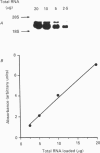Abstract
1. Histidine decarboxylase in the enterochromaffin-like cells of the gastric corpus mucosa converts histidine to histamine which in turn stimulates gastric acid secretion. The control of histidine decarboxylase activity is poorly understood. We have examined how fasting and refeeding influence the abundance of the messenger RNA encoding histidine decarboxylase in the gastric corpus of the rat. 2. The polymerase chain reaction was used to generate a probe for detection of histidine decarboxylase messenger RNA in Northern and slot blots of total RNA from the gastric corpus of rats fasted for up to 48 h, or fasted and then refed. A gastrin monoclonal antibody was used to neutralize the action of endogenous gastrin. 3. Fasting progressively reduced histidine decarboxylase messenger RNA abundance by 3- to 4-fold after 48 h. Refeeding induced a rapid increase in histidine decarboxylase messenger RNA abundance which was detectable after 30 min. 4. There was a significant correlation between histidine decarboxylase messenger RNA abundance and plasma gastrin. Administration of gastrin antibody inhibited the increase in histidine decarboxylase activity after 6 h refeeding, but not after refeeding for 30 min. 5. The results suggest that histamine-mediated changes in postprandial acid secretion depend on control of histidine decarboxylase mRNA levels, and that gastrin regulates production of this enzyme in the rat over periods of a few hours.
Full text
PDF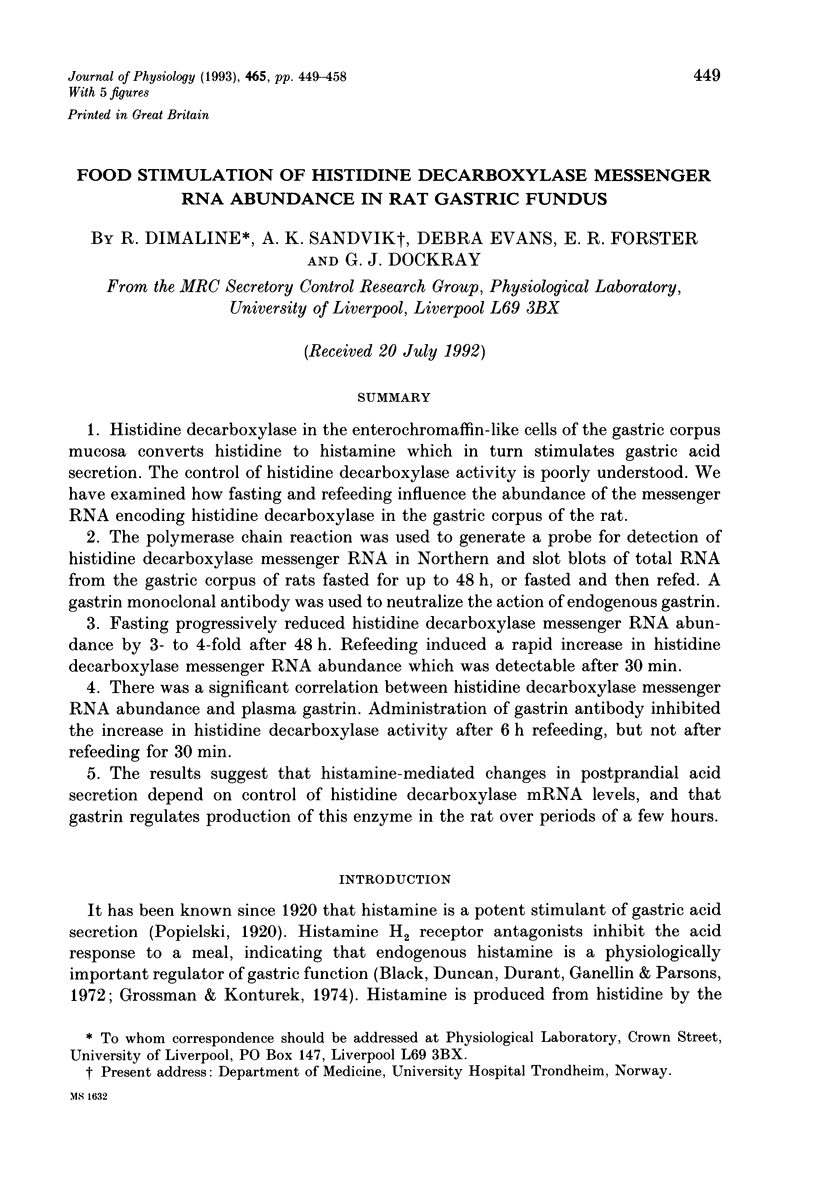

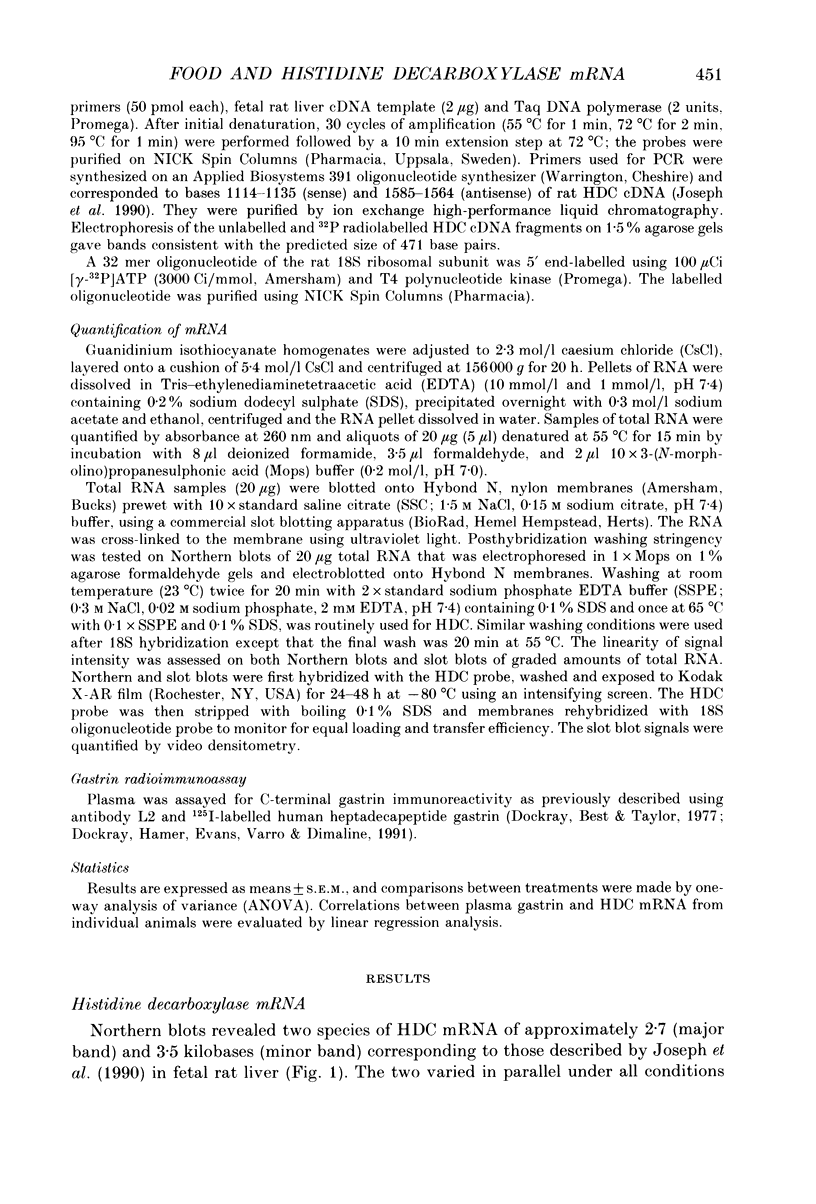
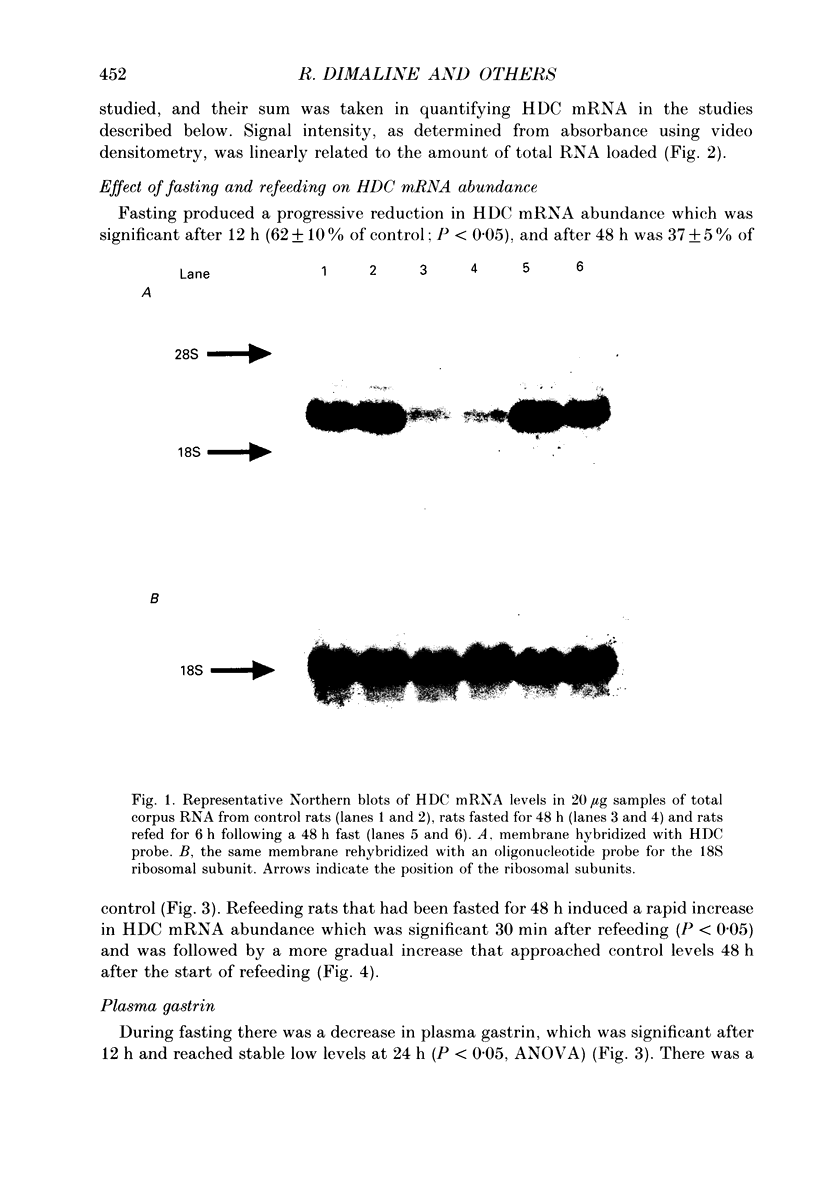
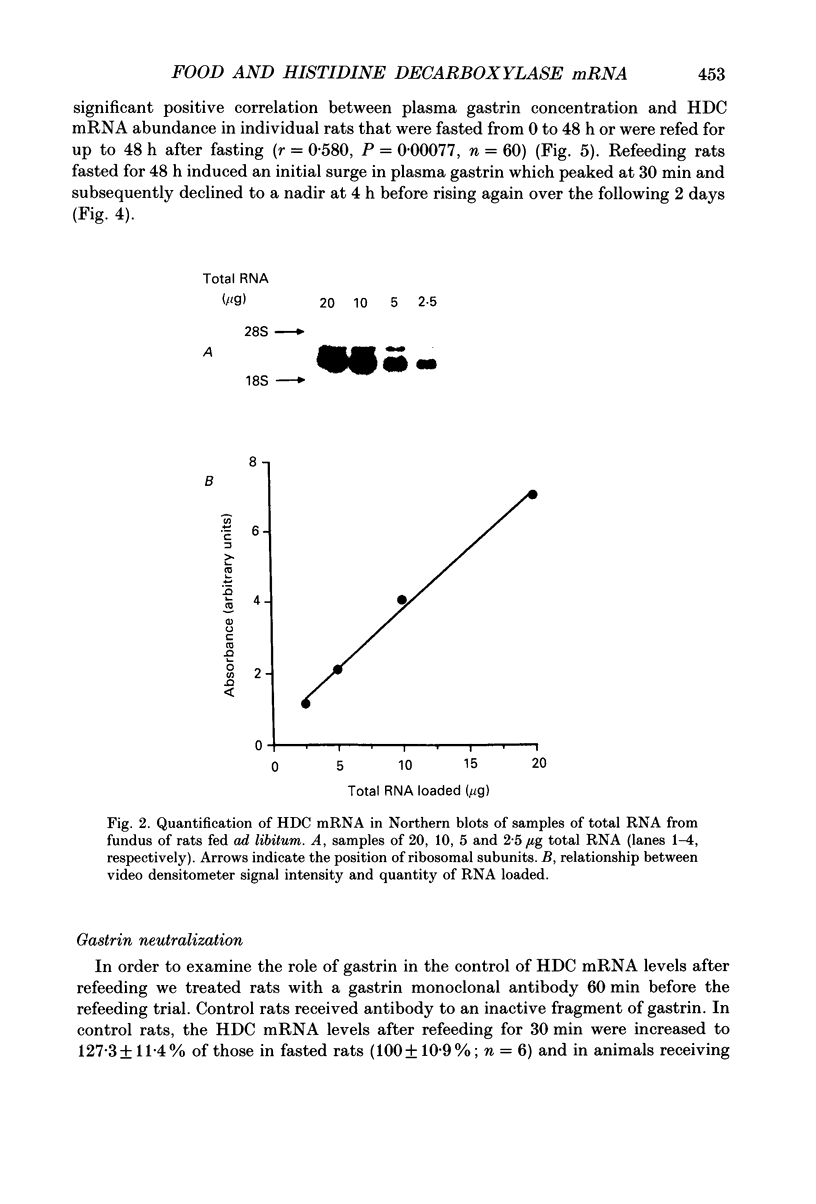
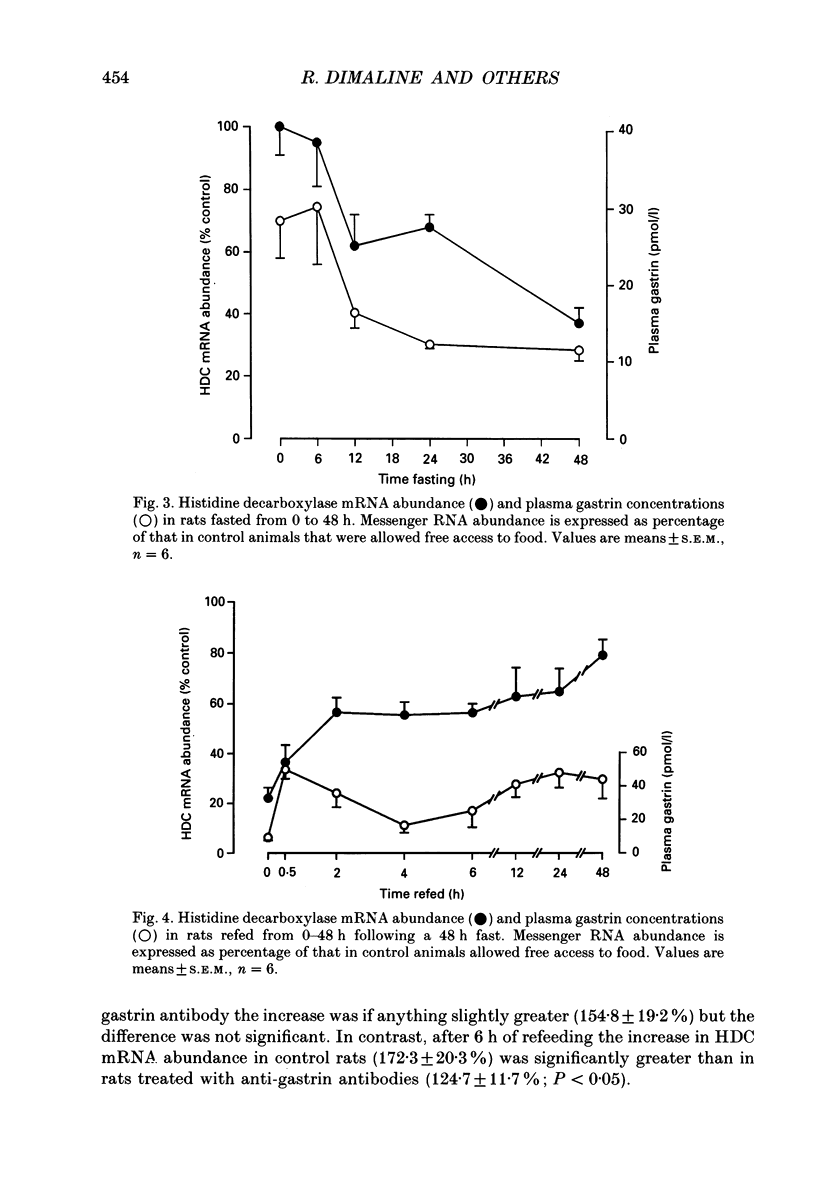
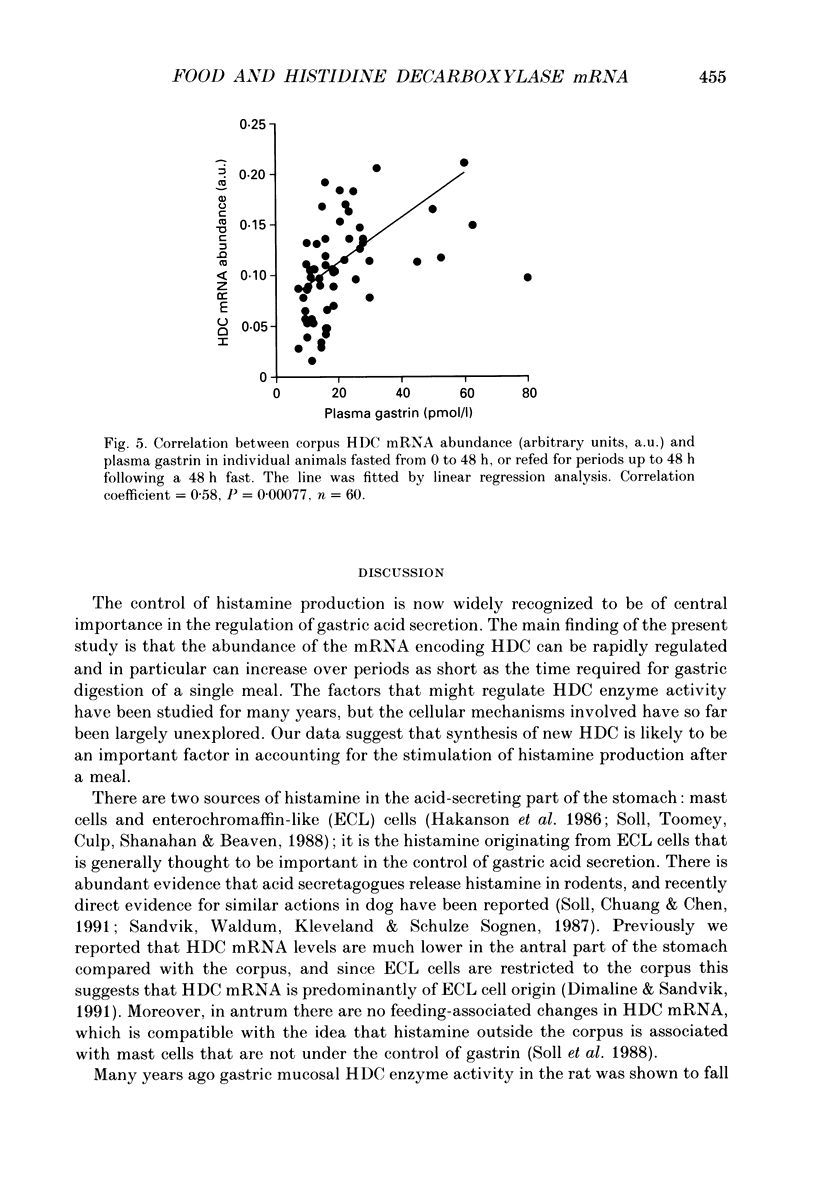
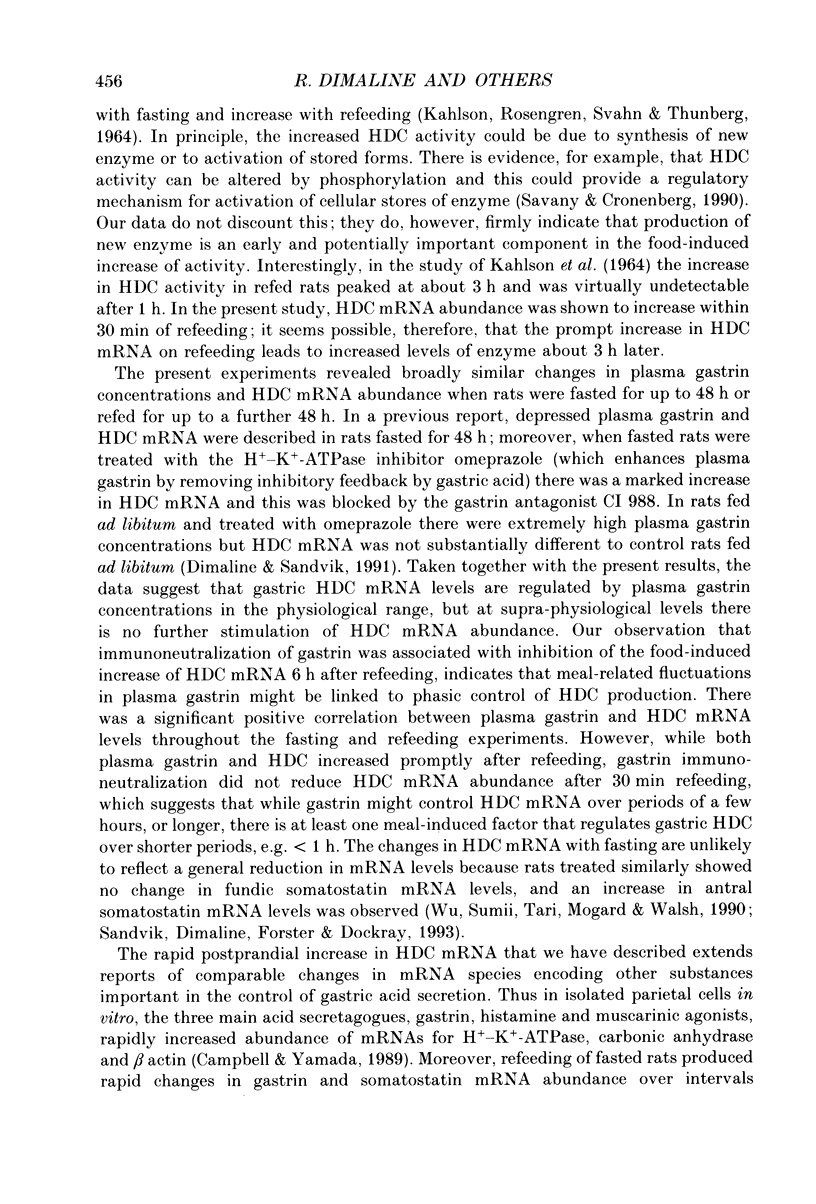
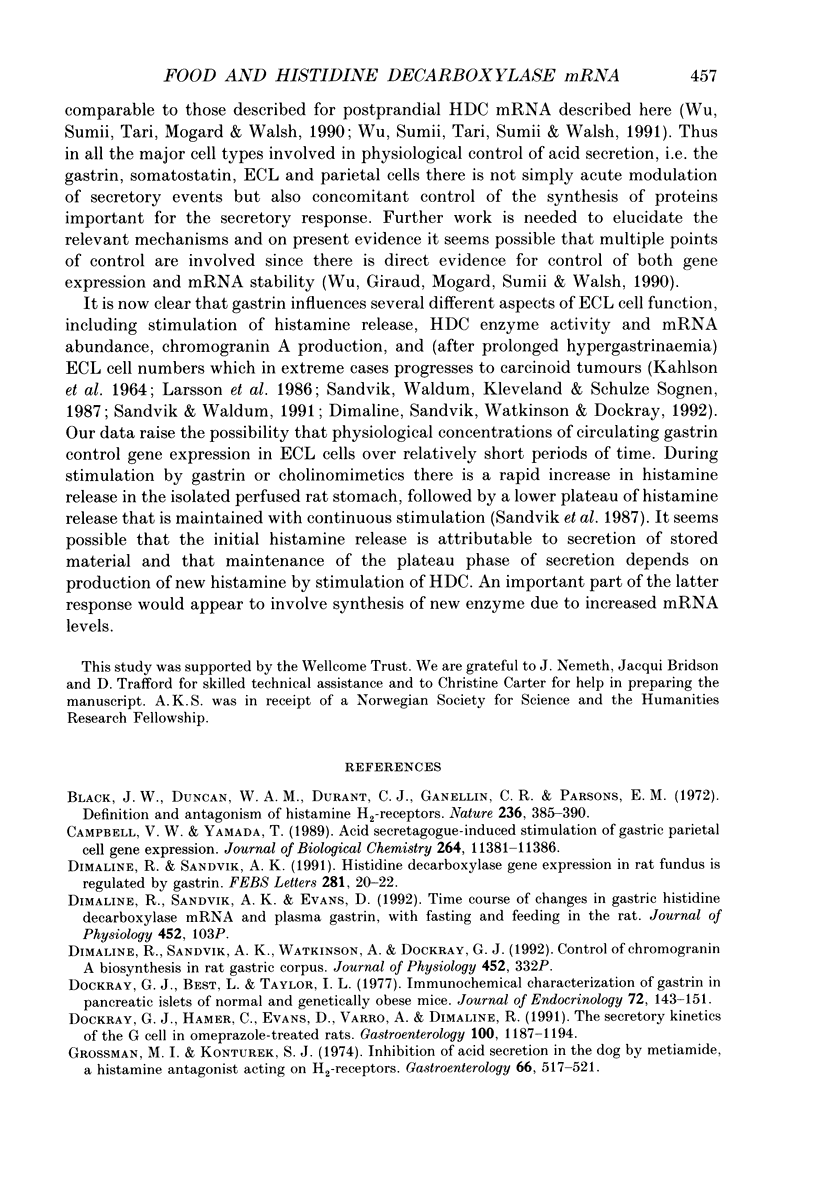
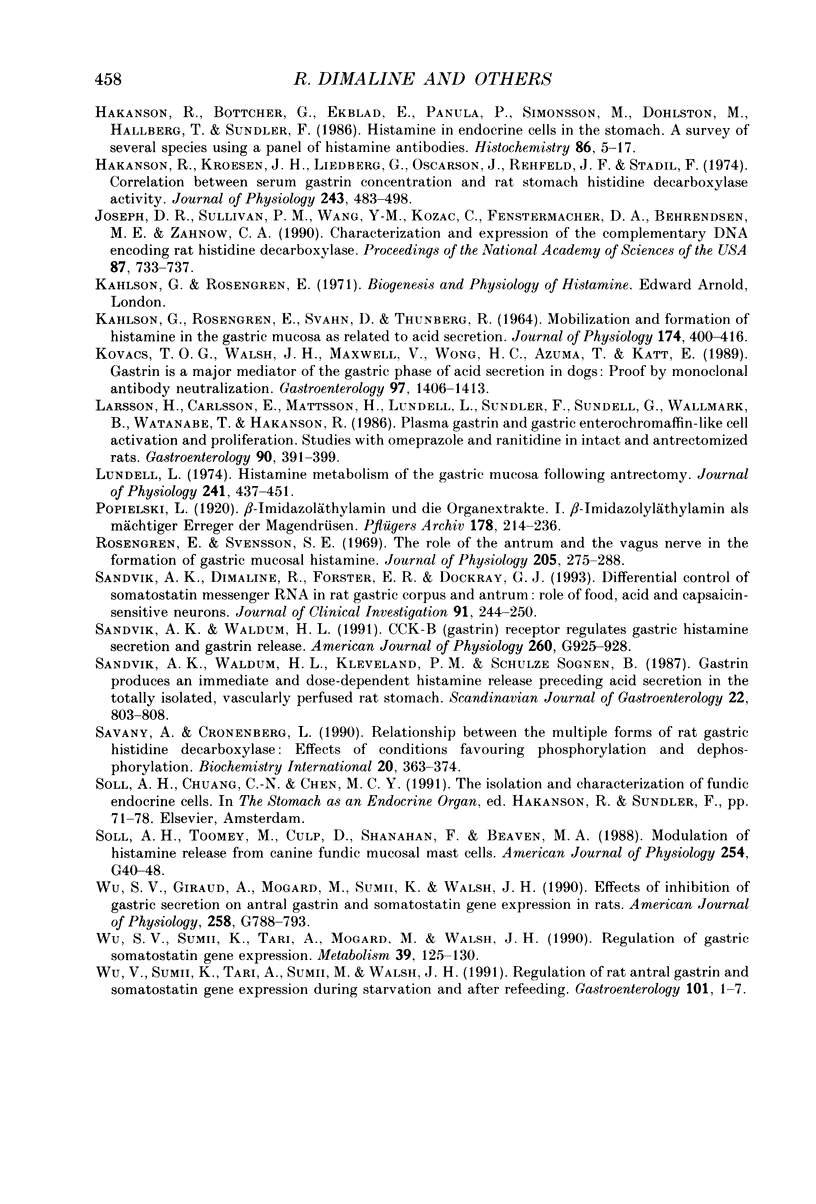
Images in this article
Selected References
These references are in PubMed. This may not be the complete list of references from this article.
- Black J. W., Duncan W. A., Durant C. J., Ganellin C. R., Parsons E. M. Definition and antagonism of histamine H 2 -receptors. Nature. 1972 Apr 21;236(5347):385–390. doi: 10.1038/236385a0. [DOI] [PubMed] [Google Scholar]
- Campbell V. W., Yamada T. Acid secretagogue-induced stimulation of gastric parietal cell gene expression. J Biol Chem. 1989 Jul 5;264(19):11381–11386. [PubMed] [Google Scholar]
- Dimaline R., Sandvik A. K. Histidine decarboxylase gene expression in rat fundus is regulated by gastrin. FEBS Lett. 1991 Apr 9;281(1-2):20–22. doi: 10.1016/0014-5793(91)80348-7. [DOI] [PubMed] [Google Scholar]
- Dockray G. J., Best L., Taylor I. L. Immunochemical characterization of gastrin in pancreatic islets of normal and genetically obese mice. J Endocrinol. 1977 Feb;72(2):143–151. doi: 10.1677/joe.0.0720143. [DOI] [PubMed] [Google Scholar]
- Dockray G. J., Hamer C., Evans D., Varro A., Dimaline R. The secretory kinetics of the G cell in omeprazole-treated rats. Gastroenterology. 1991 May;100(5 Pt 1):1187–1194. [PubMed] [Google Scholar]
- Grossman M. I., Konturek S. J. Inhibition of acid secretion in dog by metiamide, a histamine antagonist acting on H2 receptors. Gastroenterology. 1974 Apr;66(4):517–521. [PubMed] [Google Scholar]
- Håkanson R., Böttcher G., Ekblad E., Panula P., Simonsson M., Dohlsten M., Hallberg T., Sundler F. Histamine in endocrine cells in the stomach. A survey of several species using a panel of histamine antibodies. Histochemistry. 1986;86(1):5–17. doi: 10.1007/BF00492340. [DOI] [PubMed] [Google Scholar]
- Håkanson R., Kroesen J. H., Liedberg G., Oscarson J., Rehfeld J. F., Stadil F. Correlation between serum gastrin concentration and rat stomach histidine decarboxylase activity. J Physiol. 1974 Dec;243(2):483–498. doi: 10.1113/jphysiol.1974.sp010763. [DOI] [PMC free article] [PubMed] [Google Scholar]
- Joseph D. R., Sullivan P. M., Wang Y. M., Kozak C., Fenstermacher D. A., Behrendsen M. E., Zahnow C. A. Characterization and expression of the complementary DNA encoding rat histidine decarboxylase. Proc Natl Acad Sci U S A. 1990 Jan;87(2):733–737. doi: 10.1073/pnas.87.2.733. [DOI] [PMC free article] [PubMed] [Google Scholar]
- KAHLSON G., ROSENGREN E., SVAHN D., THUNBERG R. MOBILIZATION AND FORMATION OF HISTAMINE IN THE GASTRIC MUCOSA AS RELATED TO ACID SECRETION. J Physiol. 1964 Nov;174:400–416. doi: 10.1113/jphysiol.1964.sp007494. [DOI] [PMC free article] [PubMed] [Google Scholar]
- Kovacs T. O., Walsh J. H., Maxwell V., Wong H. C., Azuma T., Katt E. Gastrin is a major mediator of the gastric phase of acid secretion in dogs: proof by monoclonal antibody neutralization. Gastroenterology. 1989 Dec;97(6):1406–1413. doi: 10.1016/0016-5085(89)90383-1. [DOI] [PubMed] [Google Scholar]
- Larsson H., Carlsson E., Mattsson H., Lundell L., Sundler F., Sundell G., Wallmark B., Watanabe T., Håkanson R. Plasma gastrin and gastric enterochromaffinlike cell activation and proliferation. Studies with omeprazole and ranitidine in intact and antrectomized rats. Gastroenterology. 1986 Feb;90(2):391–399. doi: 10.1016/0016-5085(86)90938-8. [DOI] [PubMed] [Google Scholar]
- Lundell L. Histamine metabolism of the gastric mucosa following antrectomy. J Physiol. 1974 Sep;241(2):437–451. doi: 10.1113/jphysiol.1974.sp010665. [DOI] [PMC free article] [PubMed] [Google Scholar]
- Rosengren E., Svensson S. E. The role of the antrum and the vagus nerve in the formation of gastric mucosal histamine. J Physiol. 1969 Nov;205(2):275–288. doi: 10.1113/jphysiol.1969.sp008964. [DOI] [PMC free article] [PubMed] [Google Scholar]
- Sandvik A. K., Dimaline R., Forster E. R., Evans D., Dockray G. J. Differential control of somatostatin messenger RNA in rat gastric corpus and antrum. Role of acid, food, and capsaicin-sensitive afferent neurons. J Clin Invest. 1993 Jan;91(1):244–250. doi: 10.1172/JCI116177. [DOI] [PMC free article] [PubMed] [Google Scholar]
- Sandvik A. K., Waldum H. L. CCK-B (gastrin) receptor regulates gastric histamine release and acid secretion. Am J Physiol. 1991 Jun;260(6 Pt 1):G925–G928. doi: 10.1152/ajpgi.1991.260.6.G925. [DOI] [PubMed] [Google Scholar]
- Sandvik A. K., Waldum H. L., Kleveland P. M., Schulze Søgnen B. Gastrin produces an immediate and dose-dependent histamine release preceding acid secretion in the totally isolated, vascularly perfused rat stomach. Scand J Gastroenterol. 1987 Sep;22(7):803–808. doi: 10.3109/00365528708991918. [DOI] [PubMed] [Google Scholar]
- Savany A., Cronenberger L. Relationship between the multiple forms of rat gastric histidine decarboxylase: effects of conditions favouring phosphorylation and dephosphorylation. Biochem Int. 1990;20(2):363–374. [PubMed] [Google Scholar]
- Wu S. V., Giraud A., Mogard M., Sumii K., Walsh J. H. Effects of inhibition of gastric secretion on antral gastrin and somatostatin gene expression in rats. Am J Physiol. 1990 May;258(5 Pt 1):G788–G793. doi: 10.1152/ajpgi.1990.258.5.G788. [DOI] [PubMed] [Google Scholar]
- Wu S. V., Sumii K., Tari A., Mogard M., Walsh J. H. Regulation of gastric somatostatin gene expression. Metabolism. 1990 Sep;39(9 Suppl 2):125–130. doi: 10.1016/0026-0495(90)90229-6. [DOI] [PubMed] [Google Scholar]




